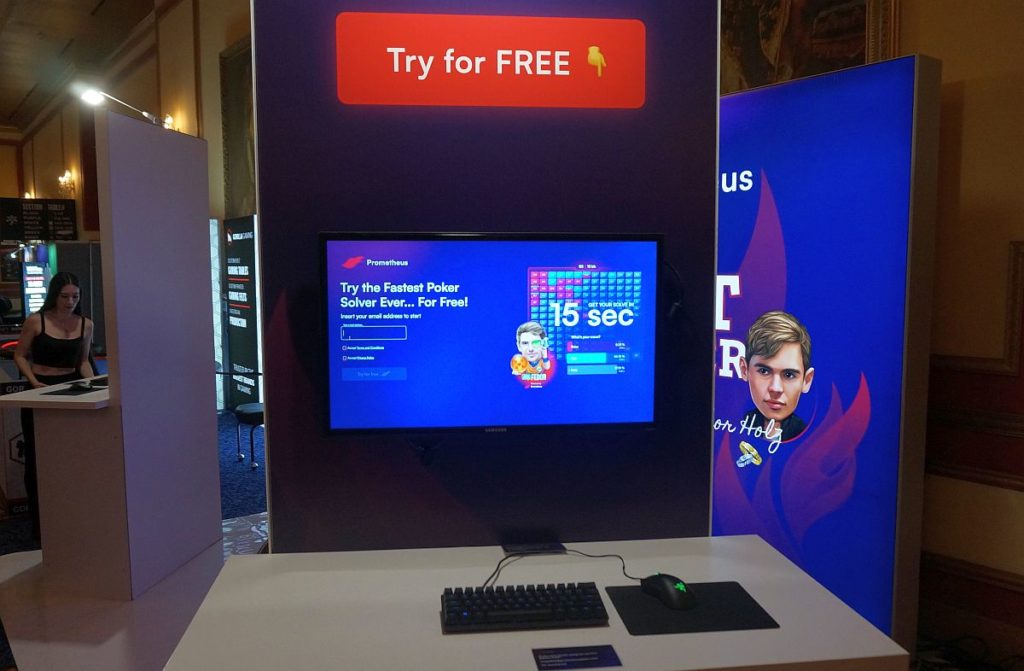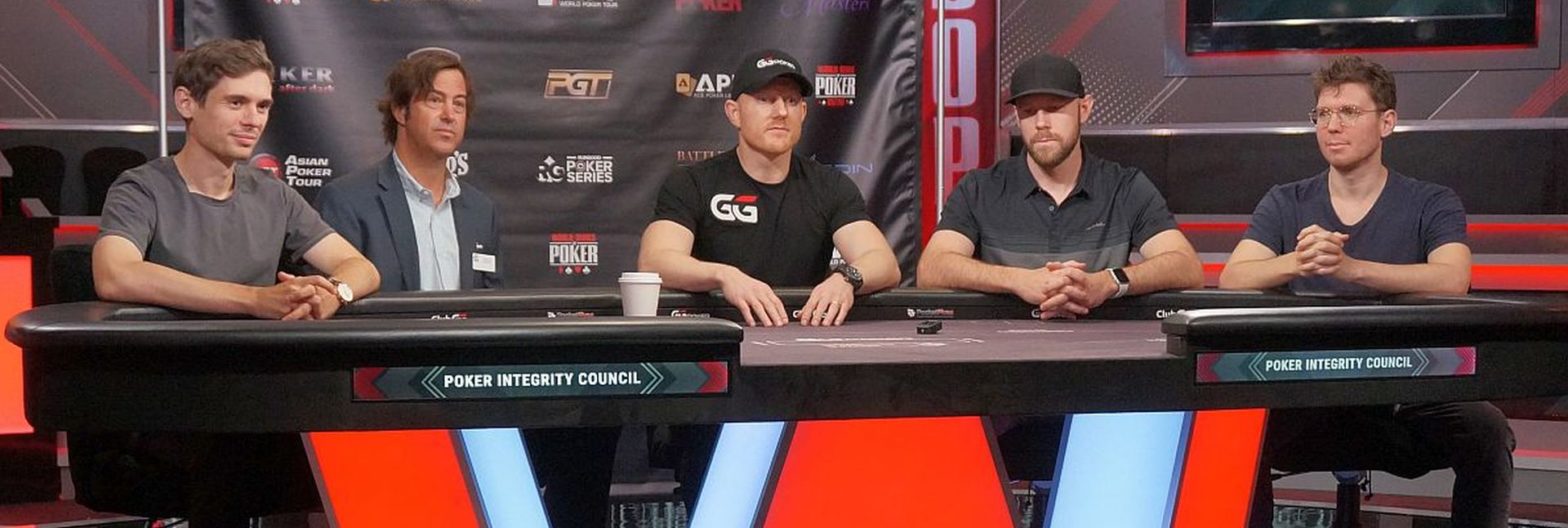(Opinions offered here are those of the author only and do not necessarily represent the opinions or viewpoints of the owners of Kick Ass Poker — hh.)
Beginning on August 1, a new era in trying to oust chronic cheaters from both the online and live poker worlds is slated to begin its monitoring and judging activities. Called the Poker Integrity Council (PIC), it’s an effort launched by GGPoker that’s to be operated in partnership with many of the live-tournament operators around the globe, including both the World Series of Poker (WSOP) and the World Poker Tour (WPT).
It’s a bold initiative. Burdened by the reality that “successful” online-poker cheaters have used their illicit winnings to further their live-poker careers, where more fame and sponsorship opportunities await, the Poker Integrity Council was announced last month at a WSOP press conference, and tasked with identifying cheaters on GGPoker, which has entrenched itself as the world’s largest online cash-game site, a good distance ahead of PokerStars.
Suspected cheaters on GGPoker are brought to the attention of PIC’s five members, each of which is a prominent pro himself. The five players are Jason Koon, Andrew Lichtenberger, Seth Daniels, Nick Petrangelo, and Fedor Holz; Koon was signed in 2021 by GGPoker as a brand ambassador, but with an eye to the future. At his late-2021 debut in a GG role, Koon declared that part of his responsibilities would be to help the site identify online cheaters.
PIC to begin monitoring on August 1
It took another half a year for the entirety of PIC to come together, but it has, and now it’s time to see how well the concept translates to real-world action. Koon and the other four PIC player-members will each receive full data from GGPoker regarding suspected and/or reported cheats, and each player, on his own and using his own tools, will then judge whether or not the suspected player is indeed cheating.
If three of the five PIC players agree that an online GGPoker is cheating, then the next step becomes what action to take. Most minor transgressions, and perhaps even first or second occurrences for major ones, are likely to be dealt with through a series of slowly escalating penalties. That includes warnings and suspensions. In what Koon has described as the “worst of the worst” cases, involving repeat offenders and significant rules violations, from collusion and team play to using illegal software (including bots and real-time software aids, or RTAs), the guilty player can be banned from GGPoker.
That’s where the power that PIC is supposed to be bringing to bear against poker cheaters comes into play. If banned, that player’s identity is then forwarded to all the live series and venues who have partnered with PIC, and the cheating player is supposed to be banned from all those live series as well.
How will it work out? We’ll see. GGPoker notably banned about 40 players in 2021 for various forms of cheating, including Ali Imsirovic, Sergi Reixach, and Jake Schindler. Bryn Kenney was not among those 40 banned players, but Kenney, who was loudly accused by Martin Zamani of orchestrating a large and multifaceted cheating operation on several sites, stopped playing on GGPoker a year earlier under very curious circumstances. Kenney, who was a sponsored GG pro at the time as well as having some sort of affiliate/agent deal with the site, simply stopped playing on the site, as far as online record shows. It’s a safe bet that there’s much, much more to the story, what with all that’s transpired since.
Olive branch extended
One might think that kicking all those prominent and known cheats to the curb might be a good way to start. However, at its launch conference, PIC’s Koon disclosed that an olive branch would be extended to known cheaters who had previously been banned by the site. It’s likely that GGPoker has banned hundreds of cheaters over the years, and now it appears that all of them will receive a fresh start, if they so choose. It’s being called a brief grace period by GGPoker and PIC, to allow former habitually cheating players a final chance to adhere to the rules.
It also means they’ll be judged anew, if their play indicates something untoward going on. And for those that are judged to have renewed their cheating ways as well, then there’s a chance that they’ll be banned from live tours as well. The only hitch in PIC’s giddyup as it pertains to the banning is that it will all take place without public disclosure. The only way that other players will be able to discern that a given cheater has been banned is if the cheater suddenly doesn’t show up for live events at which he might otherwise be expected to play.
Potential flies in the PIC anti-cheating ointment
There are at least three separate issues that could negatively impact how well PIC is able to meet its stated goals. The first is that PIC is far from universal with regards to its impact. PokerStars recently announced its own enhanced anti-cheating campaign, with a very similar transition: Players found to have cheated online on PokerStars will no longer be welcome at Stars-sponsored events, such as stops on the European Poker Tour (EPT).
Most other major sites have their own anti-cheating operations as well, and some of those sites also have live-poker partnerships. GGPoker and PIC have done a solid job of signing up numerous live partners, but they don’t have all the big ones aboard, as the absent of all the Stars-connected entities illustrates. For something like PIC to work, it needs to be truly universal, and the rivalries between the largest online sites run deep. All of GGPoker’s current partners are live operators, too; the site hasn’t convinced a single online site or network to join it in this project. That speaks volumes to the unwillingness sites have with sharing data and anti-cheating methodology with rival sites.
It’s also going to be interesting to see whether live venues simply line up to ban any player who is determined to have cheated on GGPoker. For example, all those recently accused cheaters mentioned above were very prominent at the just completed 2022 WSOP, where each took part in numerous high-roller events. For virtually its entire history, the WSOP has worried itself only about transgressions that took place at the WSOP or at other Caesars properties.
The WSOP has avoided portraying itself as the global poker police, and so its participation with the PIC project is a significant flip. There’s always been a financial element to the WSOP’s reticence as well; the series has long been a profitable bright spot in what was a largely unprofitable Caesars Entertainment, which suffered through many cash-poor years and for quite a while survived under the protection of corporate bankruptcy, when a highly-leveraged corporate buyout blew up when the 2006 investment bubble burst.
WSOP aside, there’s a third element in play, and that’s the cheating players themselves. There may be some multi-jurisdictional issues that come into play. Let’s say a player from Argentina is found to be a chronic online cheater and is banned from GGPoker. GGPoker, in turn, has offices worldwide, but it is in essence a South Korean company. One place where GGPoker does not have a significant corporate presence, though, is the United States.
Let’s return to our imaginary Argentinian poker cheat, who suddenly discovers that he’s being blocked from playing at the WSOP. That’s despite that the imaginary cheat has not only not broken any American laws, his cheating activities didn’t even any activity on U.S. soil. Could such a PIC-adjudged cheater find cause to sue the WSOP? I would think it’d be on the table.
Battle over RTAs could doom PIC’s effectiveness
Okay, there’s a fourth consideration at hand. Ultimately, PIC’s effectiveness, even if it conquers all the political and jurisdictional hurdles, is likely to boil down to patrolling GGPoker for the use of banned software and underhanded methods of conducting various forms of team play. Solvers are another big issue.
Just a few days after PIC’s debut conference, it was disheartening to see GGPoker-sponsored pro and PIC member Fedor Holz featured at one of the commercial vendor booths in the Paris casino:

One can go look up the legend of Prometheus, if one wants to understand what this solver stuff is really about. But, if you don’t want to make that effort, then just ask yourself this: For what other reason than to cheat is the speed of the solver important? That’s all that Prometheus and its maker, Odin — which works closely with Holz’s PokerCode — seems to be selling. A solver that works in 15-20 seconds brings it within the range of usefulness in a key online spot. That’s pure poison to what PIC is supposed to be out to accomplish.
You can nod and wink all you want, but it just leaves me shaking my head. What happens the first time that a GGPoker player is found guilty of using Prometheus or a similar program to cheat? PIC could blow up right there. You heard it here first.
Featured image: Haley Hintze

